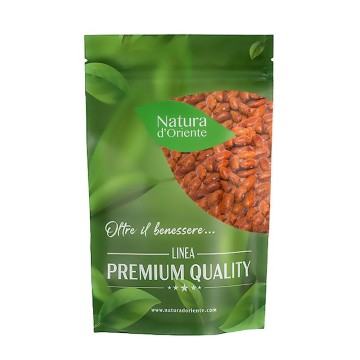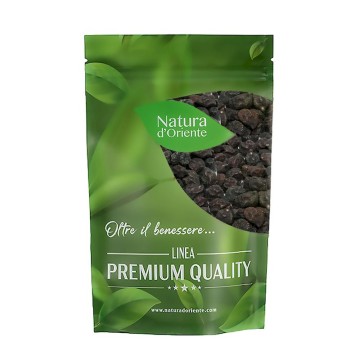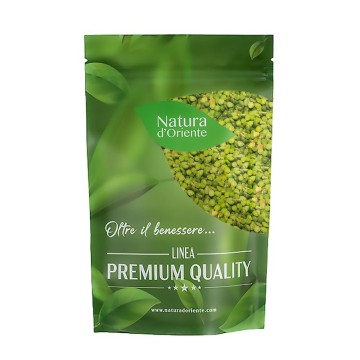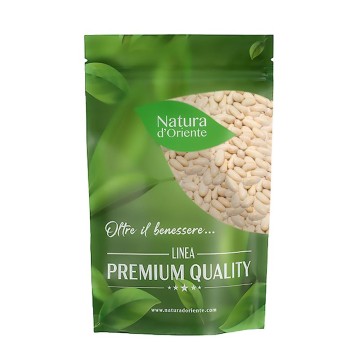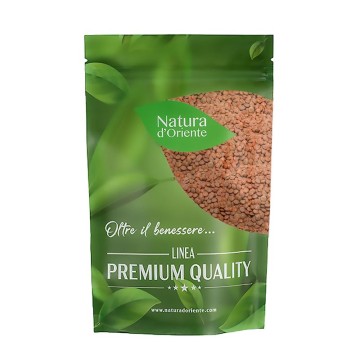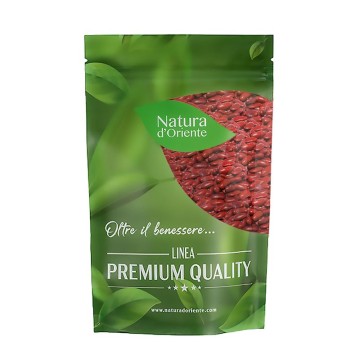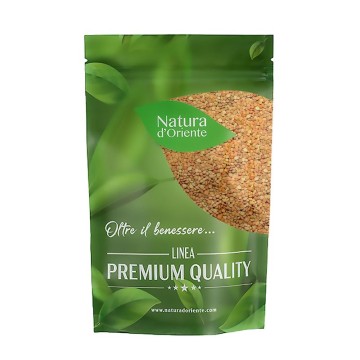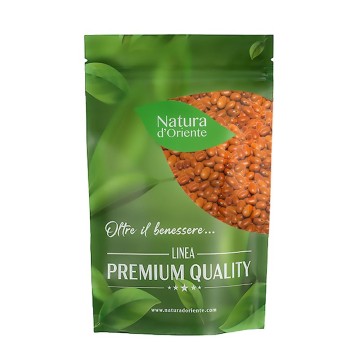These legumes have various nutritional substances useful for our body. A low fat content, it is combined with a high content of dietary fiber, vitamins and minerals.
Chickpeas therefore represent an excellent food for our well-being, and a beneficial ingredient of the diet. In particular, for those who need an effective supply of vegetable proteins.
Chickpeas: properties and benefits
Even in the version of hulled chickpeas , in which the peel is removed, in favor of digestibility, the sweet but decisive flavor of the chickpeas is maintained. The supply of vitamins and mineral salts remains excellent, while only the fibers are slightly reduced by decortication. On the other hand, the fewer fibers of the hulling increase the proteins, for the same weight of the chickpeas.
These foods are still high in fiber, and can lead to greater well-being in the diet. Chickpeas make both soluble and insoluble fiber available, which are excellent for proper digestion.
In particular, the peeled chickpeas, eliminating the excess of fibers and some sugars, avoid causing some annoying ailments such as gas and flatulence, abdominal bloating and digestive difficulties. Without the outer skin, chickpeas become more digestible .
The soluble fiber contained in chickpeas binds to bile acids and prevents them from being absorbed by the body. The body will react with chemical reactions that lower LDL (bad) cholesterol levels and total cholesterol triglycerides.
The insoluble fiber, on the other hand, fills the stomach making us feel more full, and at the same time prevents constipation. Thanks to chickpeas, therefore, it will be easier to avoid eating between meals, risking gaining weight.
Peeled chickpeas are recommended when you suffer from irritable bowel syndrome, since the peel is removed a priori.
Regarding cholesterol levels, which we have mentioned, hulled chickpeas are a source of alpha-linolenic acid (ALA), an Omega-3 fatty acid of vegetable origin. This acid promotes the increase in HDL cholesterol levels, known as good cholesterol. A process that can help lower both triglycerides and blood pressure by including chickpeas in a heart-healthy diet.
In terms of cardiovascular protection, hulled chickpeas contain a combination of antioxidants and phytonutrients that maintain the health of blood vessels, preventing oxidative stress of cells in the tissues.
To protect the arteries, hulled chickpeas also contain significant amounts of folate, vitamin B9, while magnesium improves blood circulation.
For those who fear high blood sugar levels, chickpeas contain a low glycemic index: the carbohydrate in them is broken down and digested slowly. The soluble fiber in chickpeas controls the absorption and release of sugar in the blood.
Being a rich source of iron, chickpeas are an aid to combat anemia and increase the energy levels of our body. Iron plays an essential role in the formation of hemoglobin, carrying oxygen from the lungs to all the cells of the body; it is a component of systems for energy production and metabolism.
On a dietary level, it is important to remember that chickpeas are a alternative source of protein for vegetarians and vegans , compared to proteins of animal origin. In combination with whole grain or whole wheat proteins, chickpeas provide significant amounts of vegetable protein, comparable to that of meat and dairy products. Among the health benefits is the fact that chickpeas are free of saturated fat.
Chickpeas also contain vitamins of group B, C, E, K, which are beneficial for metabolic activities. They also possess valuable minerals such as calcium, potassium, phosphorus, magnesium, zinc, copper, manganese and selenium.
The presence of these elements in chickpeas allows you to obtain the right nutrients that also maintain the well-being of the skin and hair.
Origins and History of cultivation
The chickpea plant, Cicer arietinum, is small and resistant.
All varieties derive from a head plantstem that probably originated in Middle Eastern land, and has since been cultivated by humanity for millennia, at different latitudes. Chickpeas are thought to have been present in the human diet for around 10,000 years.
The documented traces reach us in the Egyptian and Greek times, and also in the culinary culture of the ancient Romans, they were well present. Chickpeas are mentioned in the work On the properties of food (180 AD) by the doctor Galen. They were also eaten fried, and very popular: it is thought that the Latin word Cicer (chickpea) is the origin of the surname of Cicero (the Roman philosopher Marco Tullio Cicero).
Cicer arietinum adapts to many conditions, making it one of the most cultivated plants in the world. It is a fundamental dish for Middle Eastern, African and Indian cuisine.
Their luck is also due to the fact that they keep very well and have a high nutritional value.
The plant must be treated, however, because it is not very resistant to diseases, compared to other legumes. There is also a wild version (Cicer reticulatum), found only in parts of Turkey and Syria.
Scholars believe that the oldest variety of chickpeas, this Turkish one, the “Desi”, born in the central part of the Fertile Crescent (Turkey, Syria and Iran).
There is also a variety with dark seeds, subsequently introduced in India - where the “Kabuli” variety developed - with the light colored and round shape, more common today. The cream-colored chickpeas we know are the ones we offer as peeled chickpeas.
Of the cultivated chickpeas, however, you can find over 20 varieties with different colors and in various shapes. In many regions of the world, the chickpeas are peeled, or deprived of the outer skin with industrial or manual procedures.
Plant and Fruit
Cicer arietinum is an annual plant of legumes, which gives us the well-known chickpeas. It is part of the legume family, such as peas and beans, the Leguminosae / Fabaceae, and the Cicer arietinum is one of the 43 species of the genus Cicer.
The plants have a reduced height since they grow up to about 1 meter; they are found mainly in tropical, subtropical and warm temperate regions.
The chickpea is grown up to about 2,500m high, and is not suitable for the humid and hot lowland tropics, where it cannot flower.
The stems can be simple or branched, while the root reaches 1 - 2 meters deep, with secondary roots spreading mostly in the upper soil layer.
Cicer arietinum is grown for its tasty and nutritious seeds, chickpeas, which are harvested when they are immature, and can be eaten raw, roasted or boiled. Otherwise, they can be harvested when ripe and made into chickpea flour.
The flowers are single, with white or lilac or purple petals, while the fruits are found in the small swollen and rounded pod, up to 3 cm long and 1.5 cm wide. Generally there are one or two seeds in each pod.
The seeds are more or less spherical, with smooth or rough surface, up to 14 mm in diameter. They vary in color, and are usually cream colored when dried.
Nutritional values of chickpeas
These legumes make several beneficial nutrients available to our body. In 100 grams of hulled chickpeas, we find a caloric intake of about 300 kcal, nutrients such as fats (about 5% - of which about 100 mg Omega-3 fats), a lot of proteins (about 20%), few carbohydrates and a fair amount of fiber. (about 17%).
Among the mineral salts there are discrete levels of calcium (about 100 mg / 100 g), iron (about 6 mg), potassium (about 800 mg), phosphorus (about 350 mg) and magnesium (about 110 mg), as well as zinc, copper, selenium and manganese.
By consuming 100 grams of chickpeas, you assimilate: vitamin C (about 4 mg), Vitamin A (about 60 IU), good doses of folate - vitamin B9 (over 500 mcg) , Vitamin K and Vitamin E, pantothenic acid, choline and thiamine.
How to consume peeled chickpeas in the kitchen
Chickpeas can be a tasty addition to many recipes. They give the classic flavor similar to the bean family, more delicate and similar to cannellini beans, but with aearthy touch that fills the palate and gives a feeling of satiety. Their texture makes them useful for various nutritious dishes.
Peeled chickpeas are excellent for soups and stews . They can be used for salads and as a side dish. Hulling favors chickpea recipes for creams, savory or sweet , chickpea purée and hummus in particular.
The fact that they have been stripped of the peel makes cooking the peeled chickpeas faster: the cooking times of soaked legumes are fast, and the preparation of each recipe is more fast.
Remember that no salt or bicarbonate should be added to the soaking water, and it is a good idea to replace the water to prevent bacteria from forming.
Given their strong flavor, they often don't need many aromas, but for those who want to enhance their taste, it is possible to use spices such as bay leaf, rosemary, sage and small doses of cumin. These spices, during cooking, can also facilitate digestion and moderate intestinal fermentation.
Recipe with hulled chickpeas: chickpea burger
Ingredients: 500 g of peeled chickpeas - chopped oregano - very fine chopped onion - fresh sage - a teaspoon of smoked paprika (optional) - breadcrumbs - extra virgin olive oil - salt and pepper to taste
Preparation: put peeled chickpeas in unsalted water and boil them for about 20 minutes, together with the sage leaves.
Drain the chickpeas and blend them in the blender together with the oregano, onion, salt, a pinch of paprika, pepper and extra virgin olive oil.
Put the mixture in a bowl and add a spoonful of breadcrumbs at a time, until the mixture is workable to become a burger. Create them with your hands or with a mold, of the desired size, by squeezing the mixture.
Take a baking tray and line it with parchment paper, place the burgers and bake everything at 180 ° C for about 20 minutes.
You can serve the American burgers with wholemeal sandwiches, or accompany them with lettuce and tomatoes, in a salad to which add a pinch of black pepper.
Chickpeas: side effects and contraindications
Like other legumes, chickpeas are not recommended for those suffering from certain intestinal diseases, since they can cause intestinal bloating, gas and flatulence, and digestive difficulties and are not used to eating legumes .
This decorticated version can avoid the burden of these symptoms, but for those suffering from gastrointestinal diseases, it is good to ask your nutritionist for advice.
![]()





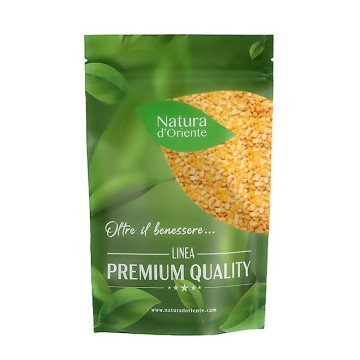



 No reward points for this product.
No reward points for this product.
